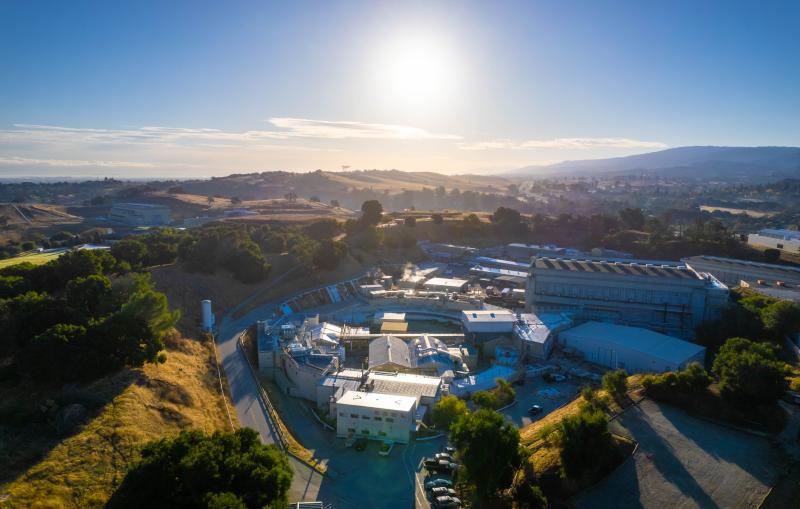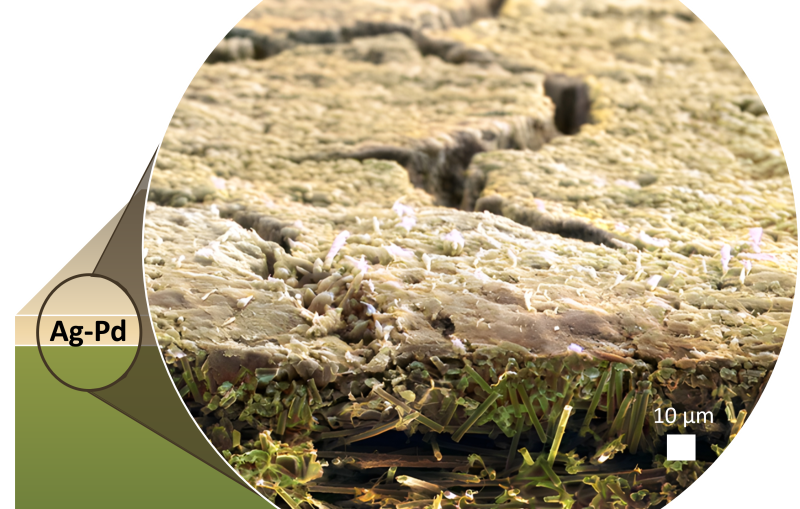Physicists solve chicken-and-egg question at the heart of photomagnetism
The results, which show that ultrafast atomic motions are the first step in forming a magnetic state, could lead to faster and more efficient data storage devices.
Light-driven reactions, which rely on moving electrons to convert photons into energy, are at the heart of many vital processes in both nature and technology. In the 1980s, scientists discovered that in certain materials, the combined effects of electronic and atomic motions during this process can even give rise to magnetism, offering a path forward for creating a new generation of data-storing devices. But until now, researchers weren’t sure exactly how this phenomenon, called photomagnetism, played out.
“The quest to understand and control the order of physical processes during this reaction has been in vain because it all happens incredibly fast,” says Eric Collet, a physicist at the Rennes Institute of Physics (IPR) in France. “It’s like the famous chicken-and-egg paradox: No one could definitively say whether the electrons are first causing the atomic changes or vice versa.”
Now, using an X-ray laser at the Department of Energy’s SLAC National Accelerator Laboratory, a team led by Collet and IPR scientist Marco Cammarata has solved this decades-old question, showing that it’s the light-induced atomic rearrangements that kick the electron transfer into action. Their results, published in Nature Chemistry earlier this month, will help in the development of more efficient photomagnetic materials. More broadly, their results showcase the ability of ultrafast X-ray science to disentangle structural and electronic dynamics, which is of prime interest for understanding a multitude of physical, chemical and biological phenomena that rely on charge transfer.
The experiment involved tiny photomagnetic crystals made of cobalt and iron, synthesized by chemists at the Institute of Molecular Chemistry and Materials of Orsay in France (ICMMO), in combination with theoretical calculations carried out at the Institute of Condensed Matter Chemistry of Bordeaux in France (ICMCB) and the Lebanese German University. At SLAC’s Linac Coherent Light Source (LCLS), researchers used a laser to initiate a reaction in the crystals, followed by an ultrafast X-ray laser flash that produced snapshots of how the crystals responded over the first few millionths of a billionth of a second – the timescale on which electrons move across a molecule.
This technique allowed the researchers to create movies of how the sample’s atoms rearranged and how electrons were transferred between its cobalt and iron atoms, showing that the reaction begins with an ultrafast electronic excitation that drives atomic motions around the cobalt atom.
Cammarata says, “This reorganization destabilizes the electronic state of the system, which ultimately causes the transfer of electrons between cobalt and iron atoms, generating a magnetic state. Our data are also very valuable for developing advanced quantum-mechanical calculations that help reveal the physical driving forces at play.”
To follow up, the team hopes to use the same technique on other more complex systems and use other colors of laser light to kickstart the reaction in order to provide additional tests of the quantum models.
“This research is a big step towards understanding how the molecular deformation and electron transfer processes occur,” Collet says. “It could help us design new materials to enhance the reaction to light and improve the efficiency of the process.” Applications include improved solar energy conversion, light-driven chemical catalysis and ultrafast data storage devices.
LCLS is a DOE Office of Science user facility. This research was supported in part by Rennes Métropole and Région Bretagne in France, the French National Research Agency, the French National Center for Scientific Research and the European Regional Development Fund.
Citation: M. Cammarata et al., Nature Chemistry, 7 December 2020 (10.1038/s41557-020-00597-8)
Contact
For questions or comments, contact the SLAC Office of Communications at communications@slac.stanford.edu.
Image caption: Using a powerful X-ray laser at SLAC National Accelerator Laboratory, researchers created molecular movies of how light triggers the formation of a magnetic state in a material. The movies capture how the sample’s atoms rearrange and how electrons move between its cobalt and iron atoms. The results show that the reaction begins with ultrafast atomic motions around the cobalt atom. (Greg Stewart/SLAC National Accelerator Laboratory)
SLAC is a vibrant multiprogram laboratory that explores how the universe works at the biggest, smallest and fastest scales and invents powerful tools used by scientists around the globe. With research spanning particle physics, astrophysics and cosmology, materials, chemistry, bio- and energy sciences and scientific computing, we help solve real-world problems and advance the interests of the nation.
SLAC is operated by Stanford University for the U.S. Department of Energy’s Office of Science. The Office of Science is the single largest supporter of basic research in the physical sciences in the United States and is working to address some of the most pressing challenges of our time.






